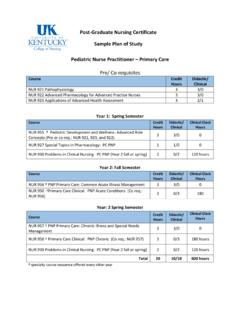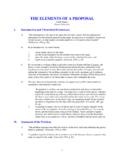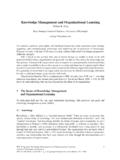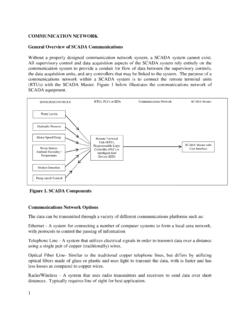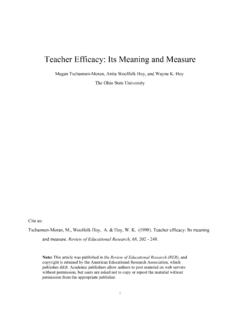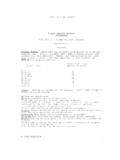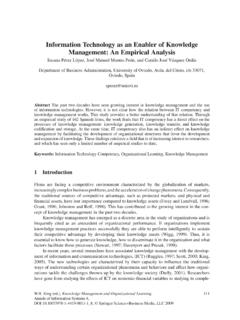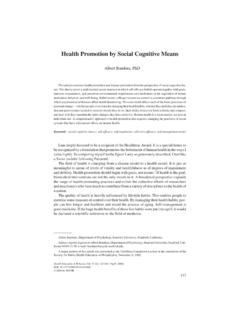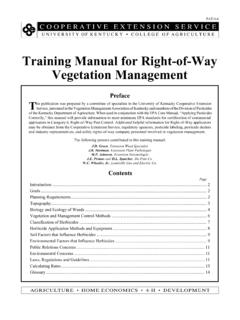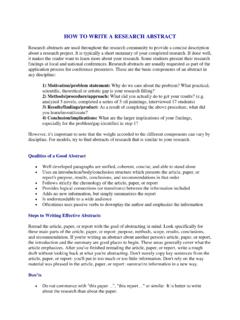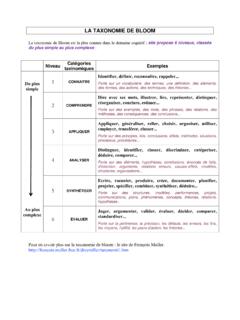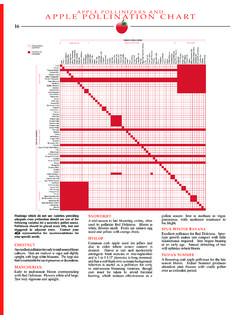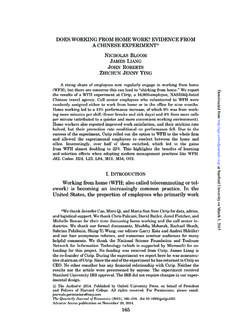Transcription of TAXONOMY OF EDUCATIONAL OBJECTIVES
1 TAXONOMY OF EDUCATIONAL OBJECTIVES The Classification of EDUCATIONAL Goals TAXONOMY OF EDUCATIONAL OBJECTIVES The of EDUCATIONAL Goals HANDBOOK 1 COGNITIVE DOMAIN By A Committee of College and University Examiners Benjamin S. bloom . Editor University Examiner University of Chicago Max D. Engelhart Director. Department of Examinations Chicago City Junior Colleges Edward J. Furst Chief, Evaluation and Examination Division University of Michigan Walker H. Hill Examiner. Board of Examiners Michigan State University David R.
2 Krathwohl Coordinator of Research Bureau of Research and Service Michigan State University LONGMANS 1. o N 1; M A N S, G R E E N A N D CO L T D 1K Grosvenor Street, London Wl .-h ,,;,u iaJ.,~,J com,Panies, branches ar,.d representatives throughout the wor/d TAXONOMY OF EDUCATIONAL OBJECTIVES CoPYRIGHT 1956 BY DAVID McKAY COMPANY, INC. ALL RIGHTS RESERVED, INCLUDING THE RIGHT TO REPRODUCE THIS BOOK, OR ANY PORTION THEREOF, IN ANY FORM PUBLISHED SIMULTANEOUSLY IN THE DOMINION OF CANADA Printed in the United States of America EDWARDS BROS.
3 , ANN MICHIGAN To Ralph W. Tyler, whose ideas on evaluation have been a constant source of Stimulation to his colleagues in examining, and whose energy and patience have never failed us . List of participants who contributed to the development of the TAXONOMY through attending one or more of the conferences held from 1949 to 1953 Anderson, Gordon V, University of Texas bloom , Benjamin S. University of Chicago Churchill, Ruth Antioch College Cronbach, L. J. University of Illinois Dahnke, Harold L,, Jr. Michigan State University Detchen, Lily Pennsylvania College for Women Dressel, Paul L.
4 Michigan State University Dyer, Henry S. EDUCATIONAL Testing Service Ebel, Robert L. University of Iowa Engelhart, Max Chicago Public Schools Findley, Warren l~ducational Testing Service l 'urst, Edward J. IJniversity of Michigan Gage, N. L. University of lllinois Harris, Chester W. University of Wisconsin Hastings, J. Thomas University of lllinois Heil, Louis M. Brooklyn College Hill, Walker H. Michigan State University Horton, Clark W. Dartmouth College Krathwohl, David R. Michigan State University Loree, M, Ray Louisiana State University Mayhew, Louis B.
5 Michigan State University McGuire, Christine University of Chicago McQuitty, John V. University of Florida Morris, John B. University of Mississippi Plumlee, Lynnette EDUCATIONAL Testing Service Pace, C. Robert Syracuse University Remmers, H. H. Purdue University Stern, George G, Syracuse University Sutton, Robert B. Ohio State University Thiede, Wilson University of Wisconsin Travers, Robert M. Human Resources Research Center San Antonio, Texas Tyler, Ralph W. Center for Advanced Study in the Behavioral Sciences Stanford, California Warrington, Willard G.
6 Michigan State University *Watt, Rex University of Southern California *Deceased CONTENTS PART I Introduction and Explanation Foreword 1 History 4 Problems 5 Organizational principles 6 Three domains-cognitive, affective, and psychomotor 7 Development of the cognitive domain 8 Chapter 1 : The Nature and Development of the TAXONOMY 10 The TAXONOMY as a c lassification device 10 What is to be classified 11 Guiding principles 13 Developing the TAXONOMY 15 The problem of a hierarchy-classification versus TAXONOMY 17 Is the TAXONOMY a useful tool?
7 20 Chapter 2: EDUCATIONAL OBJECTIVES and Curriculum Development 25 Knowledge as a TAXONOMY category 28 What is knowable 31 Justification for the development of knowledge 32 Curricular decisions to be made about knowl-edge OBJECTIVES 36 The nature of abilities and skills 38 Arts or skills + knowledge = abilities 38 Justification for the development of intellectual abilities and skills 39 Chapter 3 : The Problems of Classifying EDUCATIONAL OBJECTIVES and Test Exercises 44 Three levels of definition in each TAXONOMY category 44 The classification of OBJECTIVES 45 Test yourself on the classification of OBJECTIVES 50 The problems of classifying test exercises 51 Test yourself on the classification of test exer-cises 54 Key to the classification of EDUCATIONAL OBJECTIVES 59 PART II The TAXONOMY and Illustrative Materials 1.
8 00 Knowledge 6 2 1. 10 Knowledge of specifics 63 1. 20 Knowledge of ways and means of dealing with specifics 68 1. 30 Knowledge of the universals and abstrac-tions in a field 75 Testing for Knowledge, and illustrative test items 78 Knowledge of specifics 79 1. 20 Knowledge of ways and means of dealing with specifics 81 1. 30 Knowledge of the universals and abstrac-tions in a field 86 2. 00 Comprehension 89 2. 10 Translation 91 2. 20 Interpretation 93 2. 30 Extrapolation 95 Testing for Comprehension, and illustrative test items 97 Translation 99 2.
9 20 Interpretation 109 2. 30 Extrapolation 118 3. 00 Application 120 The EDUCATIONAL implications of OBJECTIVES in the application category 122 Testing for Application, and illustrative test items 125 4. 00 Analysis 144 4. 10 Analysis of elements 145 4. 20 Analysis of relationships 146 4. 30 Analysis of organizational principles 147 Testing for Analysis, and illustrative test items 149 Analysis of elements 151 4. 20 Analysis of relationships 155 4. 30 Analysis of organizational principles 161 5. 00 Synthesis 162 EDUCATIONAL significance of Synthesis OBJECTIVES 166 Production of a unique communication 168 5.
10 20 Production of a plan, or proposed set of Operations 170 5. 30 Derivation of a set of abstract relations 171 Testing for Synthesis, and illustrative test items 173 5. 10 Production of a unique communication 5. 20 Production of a plan, or proposed set of operations 180 5. 30 Derivation of a set of abstract relations 183 6. 00 Evaluation 185 Judgments in terms of internal evidence 188 6. 20 Judgments in terms of external criteria 190 Testing for Evaluation, and illustrative test items 193 Judgments in terms of internal evidence 196 6.
